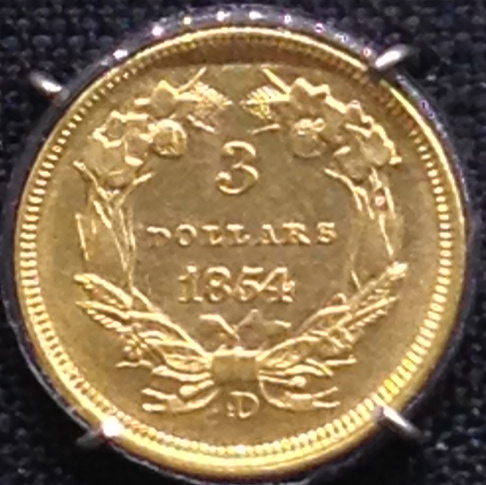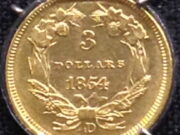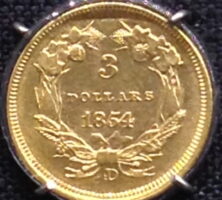A branch of the United States Mint was established in Dahlonega in 1835, a decade after the nation’s first gold rush brought thousands of miners into north Georgia, and its first coins were issued in 1838. During the next twenty-three years the Dahlonega Mint coined more than $6 million in gold but did little to alleviate the nation’s chronic money shortage. The coins were too valuable to circulate locally, and most found their way into overseas trade.

Photograph from Wikimedia
The Branch Mint at Dahlonega was one of three mints chartered by the U.S. Congress in 1835. The others were in Charlotte, North Carolina, and New Orleans, Louisiana. The opening of the Dahlonega Mint coincided with the removal from Georgia of the last Cherokee Indians, whose word for either yellow or golden, talonega, gave the town its name. Ironically, by the time the first half eagles—$5 gold pieces—were minted on April 17, 1838, the region’s gold mines were nearly exhausted.
Several problems plagued both the builders and the operators of the mint. It took many weeks to get materials and machinery into the frontier town, and skilled labor was hard to find there. Local citizens, qualified or not, wanted jobs, and there was never a shortage of applicants. The director of the United States Mint in Philadelphia, Pennsylvania, complained that the institution in Dahlonega was a “neighborhood mint.” Certainly, it was in the thick of politics. The mint superintendent was always a partisan of whatever party was in office, and the jobs of assayer and coiner, requiring skills largely absent on the frontier, eventually became political plums as well.
Despite difficulties, coins minted in Dahlonega were of high quality and are still prized by coin collectors. Mint officers preferred making the larger and easier-to-coin half eagles, but they also produced quarter eagles, gold dollars, and for one year, three-dollar gold pieces. Business at the mint, often slow, increased markedly in the early 1840s when there was a major gold strike at a local mine, but it boomed after the California gold rush as Georgia miners brought ore home with them to be coined at the local mint.
When Georgia seceded from the Union in January 1861, the state took over the Branch Mint’s building and machinery. The Confederate States of America could not supply dies for coining, however, so the half eagles minted from the bullion on hand still bore the imprint of the United States of America. Unionists in north Georgia talked of seizing the mint and holding it for the Union.
The Confederate Congress closed the Branch Mint in June 1861, and for the rest of the Civil War (1861-65) a private assayer lived there and acted as caretaker. During the Reconstruction era it was occupied by federal troops. Failing to sell the building, the U.S. government gave it to the trustees of North Georgia Agricultural College (later the North Georgia College and





